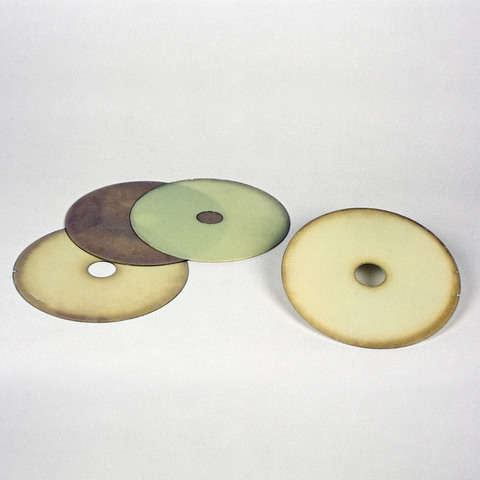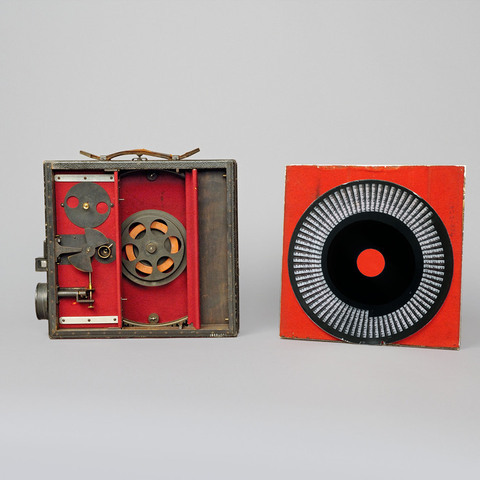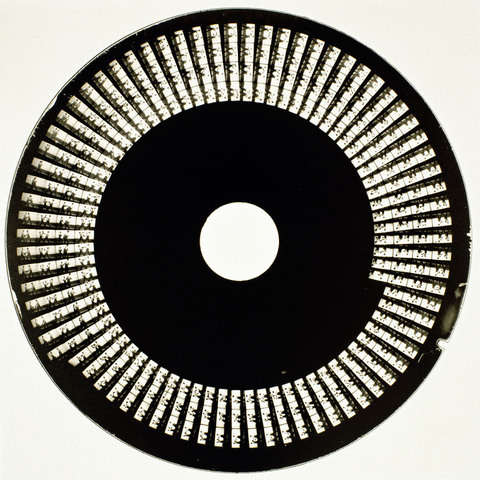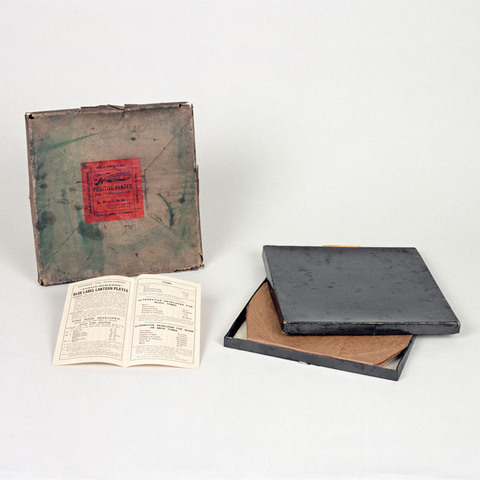Caméra réversible (disques négatifs pour)
Fiche détaillée
Type de l'appareil
quatre disques négatifs en verre format 30,4 cm
Auteurs
Kamm & Company Leonard Ulrich
Londres, 1 Gresley Road, Hornsey Rise
Fabricants
Austin Edwards
Warwick
Utilisateurs
Kamm & Company Leonard Ulrich
Londres, 1 Gresley Road, Hornsey Rise
Distributeurs
Leonard Ulrich Kamm & Company
Londres, 27 Powell Street, Goswell Road
Sujet du modèle
Informations non disponibles
Objectif
Informations non disponibles
Taille de l'objet
Ouvert :
Informations non disponibles
Fermé :
Informations non disponibles
Diamètre :
30.4 cm
Taille de la boîte de transport
Informations non disponibles
Remarques
Le Kammatograph (AP-95-1418) peut prendre 550 vues successives (en spirale) sur un disque. Pour la projection, une lanterne est placée derrière. Il faut alors changer l'obturateur et placer le disque positif à l'intérieur. L'un des principaux arguments de vente pour le Kammatograph consistait à affirmer que son système n'offrait aucun danger, puisqu'il utilisait des disques de verre et non du film celluloïd. Le fonctionnement de l'appareil est simple : le disque négatif est disposé à l'intérieur de la boîte et maintenu par un fermoir métallique. La porte une fois fermée, on tourne la manivelle. Le disque se met en rotation, et en même temps se déplace latéralement devant l'objectif. Il faut ensuite tirer le disque en positif pour pouvoir le projeter. Il existe un modèle conçu uniquement pour la projection. Le Kammatograph réversible (prise de vues et projection) était vendu 9,90 £ en 1900.
"This invention relates to an apparatus for taking photographs of any subject in motion to the number of 500 to 600 in succession in spiral form on a glass plate, and has been principally designed for use by the amateur photographer. Hitherto the only means for taking animated photographs has been by emplying a xilonite film to the lenght of many feet. To the use of this several objections may be urged ; amongst others, its cost over and above the price of the projecting apparatus, the difficulty in developing and printing a film of some lenght, together with early liability to wear and tear, and lastly, the danger of it catching fire. None of the London County Council Regulations with regard to cinematographs apply to the Kammatograph, as there is no danger from fire, and it comes under the heading of ordinary lantern projecting. In the Kammatograph all these drawbacks are overcome by the abandoning altogether of a "celluloid" film, and the substitution of an ordinary circular glass plate, 12 inches in diameter, coated with emulsion, on which is suspended in a metal ring, is absolutely free from any wear, and will last a lifetime if not broken. The Kammatograph is a snap-shot camera, as many hundreds of different subjects can be taken on one plate. The Kammatograph is an appliance for enlargments of its own photos without the aid of any other apparatus. The Kammatograph is both a camera and projector combined, so that the necessity is dispensed with of using two apparatus - one for taking photos, and the other for displaying them. [...] Two kinds of apparatus are manufactured, both of the same size and price, but with the difference that one will take a series of 550 photos, and gives a picture lasting three-quarters of a minute, and the other a series of 350 photos, giving a picture which lasts over half a minute, the latter being nearly double the size of the 550 size pictures ; and, through both series can be subjected to an immediate reverse action, causing them to be shown over again, and thus prolonging the subject when displaying on the screen, yet the 350 series is chiefly applicable for photographing groups of people and objects where large images are required. A great advantage with the Kammatograph is that the subject plates are changed much quicker than is the case with a film. The Kammatograph is made of the best Spanish mahogany, aluminium, and gunmetal, and is covered with the best quality leather. The lens, which is rectilinear, is constructed on the Petzval formula, and specially manufactured for us by Messrs. Voïgtlander and Son, and is of the finest make, working at F. 5.6 of 1 Inch focus. The same lens is used as an objective for projecting the pictures. [...] Negative and positive plates are coated with emulsion by Mr. Austin-Edwrads, of Warwick, whose well known reputation speaks for itself. They are the same as are used in ordinary dry-plate photography. The plates are cut in circular form, their diameter being 12 inches, on which a series of 550 photos can be taken. Negative plates have a speed of 200 H. and D., and are sold in packets of six, price 2/6 each plate. Positive plates (transparencies) are sold in packets of six, price 2/6 each plate. Subject plates, 3/6 each plate. The great advantage of these Kammatograph Lantern Plates, and their superiority over any other emulsion, lies in the fact that they can be developed with Hydrokinone, or ordinary Pyro-Soda developer, as used of negatives, and will with such developer yield rich, warm, velvety tones of the precise tone best suited for cinematograph work, liquid in the shadows and transparent in the high light. " (Catalogue of the Kammatograph acccessories & specialities, London, L. Kamm & Co., s.d.)



